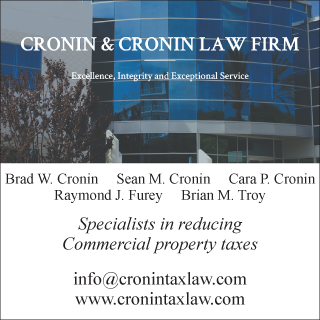How owners and developers can ensure a strict enforcement of lien waivers - by Andrew Richards and Elizabeth Marchionni
Owners and developers know that when it comes time for payment on a project, contractors typically focus on getting paid as soon as possible. And, the sooner the requisition with all other documents required under the contract are submitted, the sooner payment will be processed. Very frequently, contractors overlook the standard but significant language contained in the waiver of lien and release forms that are routinely required. In fact, many contractors consider such forms to be a mere receipt of payment or required by contract required for payment; and, in many cases courts have agreed with the contractor. However, if drafted properly, both final and partial “Waiver And Release” forms will act as a partial or complete waiver and release of any and all claims of the contractor including lien, delay damage, acceleration and extra work claims as of the date of the requisition date or the date of the execution of the Waiver And Release form unless any claims are expressly reserved in the form itself.
New York courts have recognized that release and waiver language that is detailed and unambiguous will constitute a complete bar to actions on claims which are covered by the document and reasonably contemplated to be covered by the parties. In one case, the following language was upheld to unambiguously waive any and all project claims arising up to the date of the release execution: “The [contractor] further acknowledges that, except for any unpaid retainage, it has been paid in full for all work, labor, services, materials and equipment furnished for the Project through [date] including any claims for extra or additional work or other damages or expenses alleged to have been incurred by [contractor].” The court found that this waiver language was more than just an acknowledgment of payment of the current requisition and acted as a release of any and all claims the contractor may have otherwise had up to the date of the release, even if not specifically related to the subject payment. The following language was similarly upheld to bar claims and serves as a good example of unambiguous intent: “[contractor] formally and irrevocably releases [owner] from all claims of liability... including, but not limited to, all claims for extra work, labor or materials, delays or increased costs due to changed conditions, loss of efficiency or productivity, nonsequential work operations, delays, acceleration, suspension of work, and for any prior act, neglect or default on the part of [owner].” Absent fraud, misrepresentation, mutual mistake or duress on the part of the party receiving the general waiver and release, the language of the document released any claims not expressly reserved.
In order to preclude the Waiver And Release form from acting merely as receipt for a payment received or a document that is executed simply needed to get paid, a court will bar claims if the language in the form is unambiguous and detailed such that the language evidences an “objective manifestation of mutual assent” by the parties to release and waive the specified claims. With such detailed and clear language, courts will not look outside of the “four corners” of the form to determine whether the parties intended for the contractor to release the claims. However, the parties must also act in accordance with the terms of the Waiver And Release form, or otherwise risk undoing the form’s desired effect. For example, payment of the stated amount on the form should be timely paid to the contractor. Moreover, making subsequent payments for work or claims theoretically released previously will jeopardize the strength of the waiver and release.
Further, for a Waiver And Release form to be effective, the form should provide space in the form itself for the contractor to reserve claims that exist as of that date. This helps make it evident that the contractor is waiving “known legal rights.” Unless the contractor expressly reserves specified claims in writing on the form itself, all such claims should be deemed released by the document. This is not to say that any claim will be maintainable if the contractor failed to comply with other contractual provisions (e.g., notice of claim provisions) required to reserve a claim.
Finally, it is imperative that the terms of the contract require the execution of a particular Waiver And Release form which contains the language set forth above as a condition of payment. Without specifying the form and its terms in the contract, the contractor may be able to avoid waiving its claims at the time of payment. This will strengthen the owner’s or developer’s ability to strictly enforce a Waiver And Release form to bar claims not reserved on the form.
Andrew Richards, Esq., is a partner, and Elizabeth Marchionni is an associate at Kaufman Dolowich Voluck, Woodbury, N.Y.
Suffolk County IDA supports expansion of A&Z Pharmaceuticals


The evolving relationship of environmental consultants and the lending community - by Chuck Merritt
When Environmental Site Assessments (ESA) were first part of commercial real estate risk management, it was the lenders driving this requirement. When a borrower wanted a loan on a property, banks would utilize a list of “Approved Consultants” to order the report on both refinances and purchases.










.gif)
.jpg)